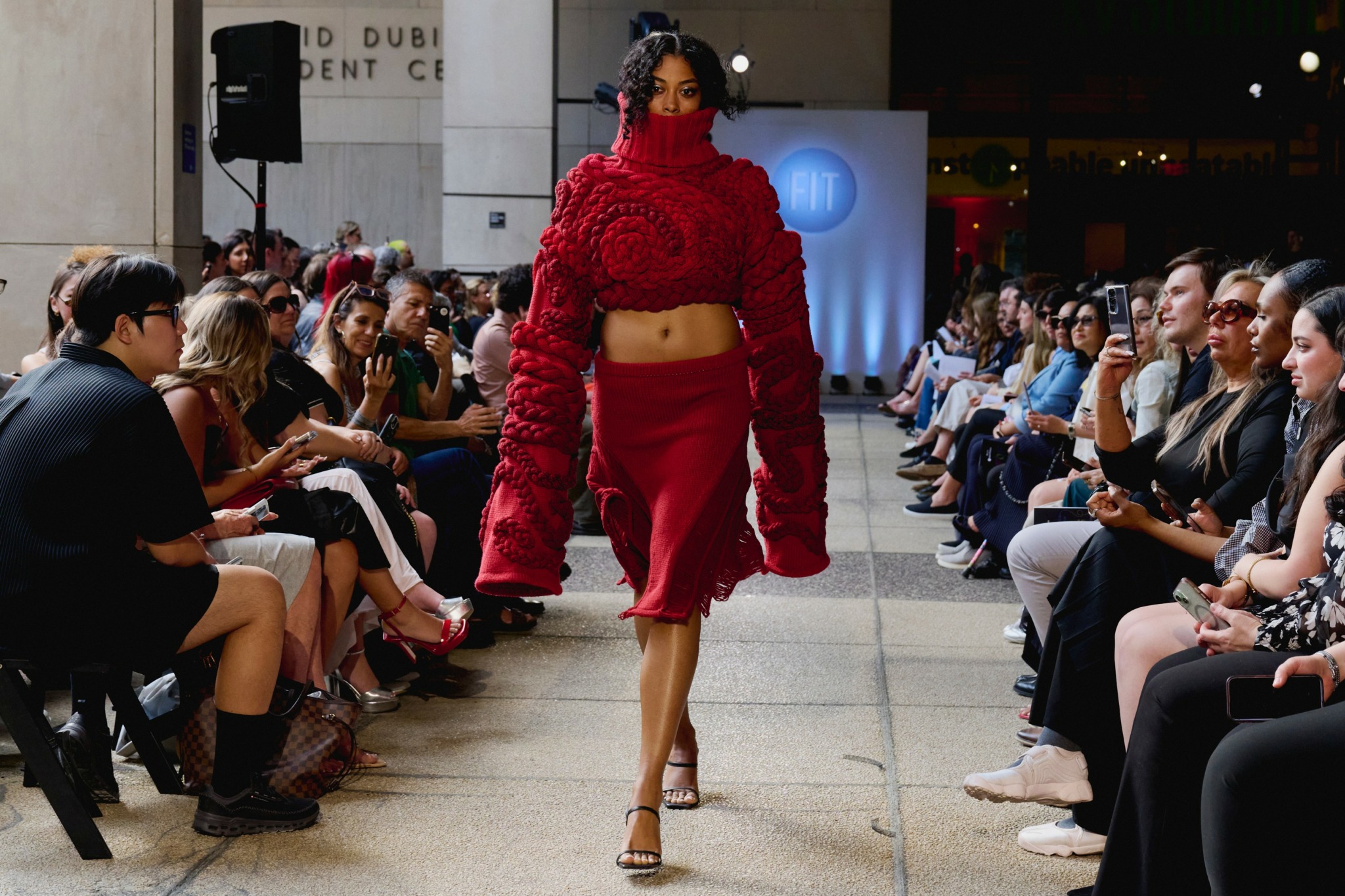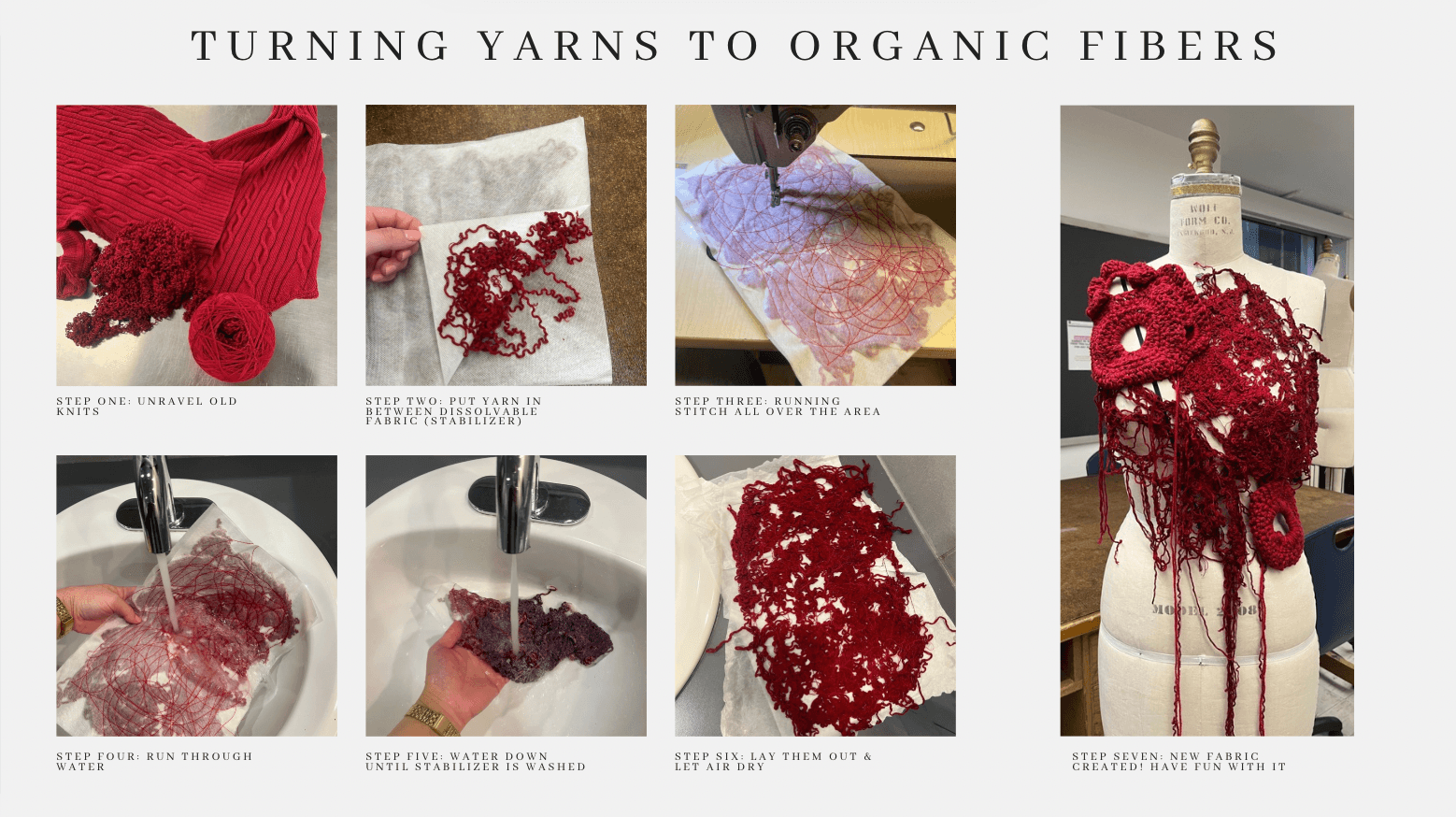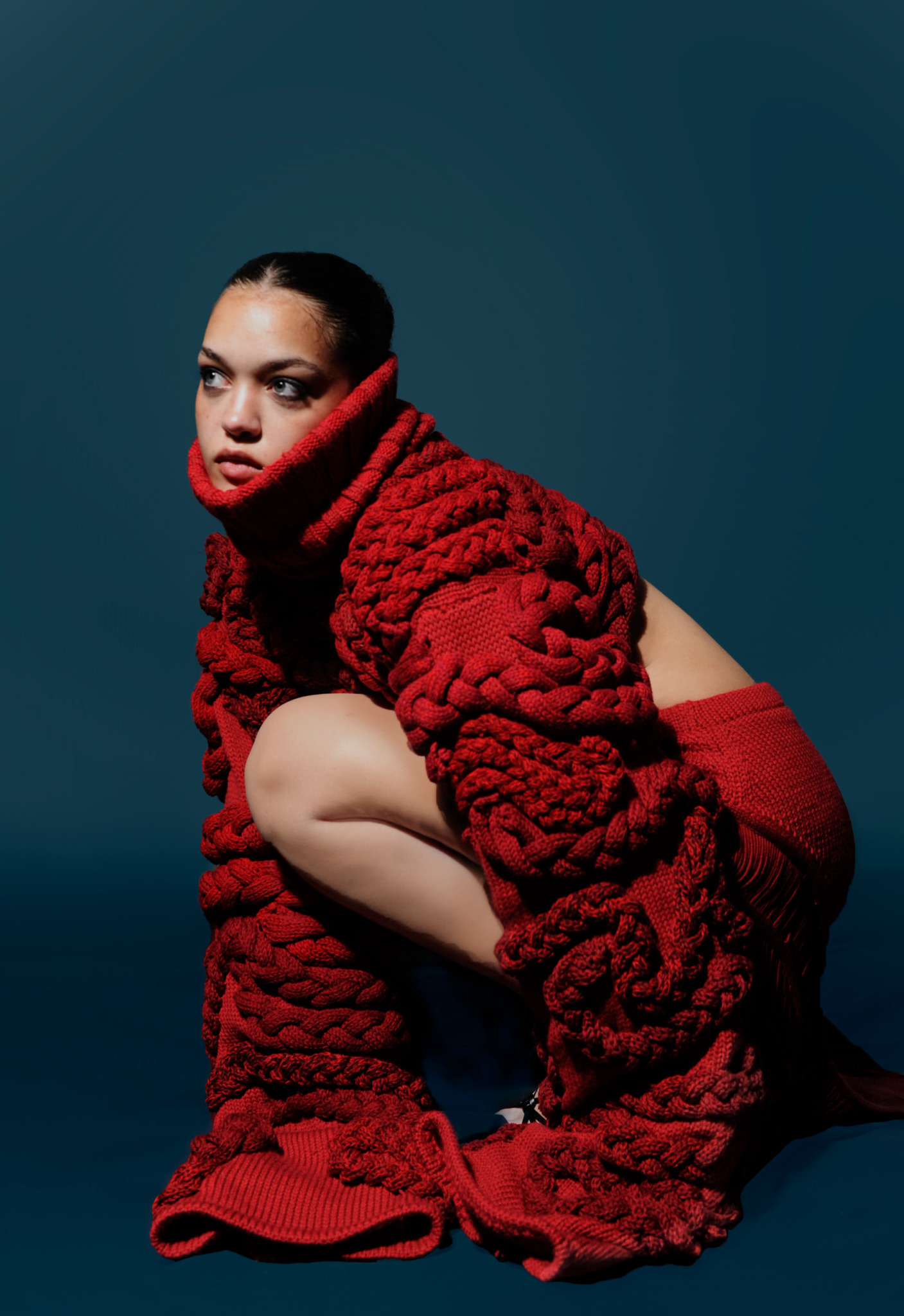We were lucky to catch up with Nataasja Isard recently and have shared our conversation below.
Alright, Nataasja thanks for taking the time to share your stories and insights with us today. What’s been the most meaningful project you’ve worked on?
My thesis project, called Transform and Transcend, was more than a final assignment. It was a reckoning—with fear, identity, and growth. It became the most meaningful project I’ve ever worked on because it forced me to confront everything I had been carrying since leaving Indonesia to study fashion in New York.
At 19, I moved across the world with nothing but a dream and a suitcase. I faced cultural isolation, pressure to prove myself, and the weight of expectations from back home. This collection was my way of making sense of all of it.
I chose to work only with thrifted sweaters—unraveling them by hand and transforming them into new, textured pieces. That process mirrored what I was going through emotionally: breaking down the old parts of myself to create something stronger. I used only the color red, because it captured every emotion I wanted to express—fear, passion, shame, resilience. It demanded to be felt.
That collection wasn’t just fashion—it was healing. It was a reminder that vulnerability isn’t weakness. It’s power. And when I saw people connect with the work, I realized that telling the truth through design can move people in ways I never expected.

Great, appreciate you sharing that with us. Before we ask you to share more of your insights, can you take a moment to introduce yourself and how you got to where you are today to our readers.
I’m Taasja—a designer who brings emotion and meaning into every thread, creating knitwear that speaks to both the heart and the eye.
I moved to New York from Indonesia at 19 to study fashion at the Fashion Institute of Technology. It was a decision that felt wild at the time—leaving behind everything familiar to pursue a dream that wasn’t exactly encouraged back home. Fashion wasn’t seen as a “safe” path. But I knew I needed to build a life that felt true to who I was, even if it meant being misunderstood at first.
That sense of risk and resilience still drives my work. I specialize in knitwear because it allows me to build from the ground up—loop by loop, stitch by stitch. There’s something meditative and intentional about it, something human. I often use reclaimed yarns and secondhand sweaters, not just for sustainability, but because I’m drawn to the idea of transformation—of turning what’s been discarded into something powerful and new.
My work blends technique with emotion. I don’t just design to look good—I design to say something. I’m most proud of my thesis collection, Transform and Transcend, which explored the alchemy of fear into courage. It was built entirely from unraveled thrifted knits, constructed in intense red, and deeply personal. Every piece represented a version of myself I had to grow through.
If you’re just discovering me, here’s what I want you to know: I design from a place of honesty. My work holds stories—sometimes quiet, sometimes loud—but always real. I believe clothing can do more than dress the body. It can speak, comfort, challenge, and connect. That’s the kind of fashion I want to keep creating—fashion that feels like a conversation between the soul and the skin.

What’s the most rewarding aspect of being a creative in your experience?
For me, the most rewarding part of being a creative is when people connect with my work in a way that feels meaningful to them. I’m always amazed when others see my creations as something that goes beyond just an aesthetic. It’s humbling to know that what I make can inspire or encourage someone else in their own creative journey.
I never set out to be seen as someone who pushes boundaries, but hearing that my work has that impact on others is something I truly appreciate. It’s incredible to think that something I created could spark new ideas or help someone feel seen in a way they didn’t expect. To me, that’s the real reward—knowing that my work can inspire others, even in small ways.

We often hear about learning lessons – but just as important is unlearning lessons. Have you ever had to unlearn a lesson?
A lesson I had to unlearn is that things don’t always go according to plan, and that’s completely okay. I thought if I worked hard enough and stuck to the plan, I’d get to where I wanted to be—no setbacks, no surprises. But reality didn’t exactly match the picture I had in my head.
There were moments early on where I felt out of place, struggling to adjust to a new country, new culture, and new expectations. I faced rejection after rejection, whether in terms of job opportunities, creative projects, or even just fitting into a community. I thought those moments were signs that I wasn’t good enough, that my dreams weren’t meant to be. But through all that, I learned that each “no” was leading me somewhere else, sometimes to places I never expected but always needed.
I realized that rejection and failure weren’t signs of defeat, but redirections, often pointing me toward something more aligned with my true self. Each time something didn’t work out as I planned, I found new ways to grow—whether it was learning a new technique, pushing my creative boundaries, or understanding more about my own identity. I learned that life, like art, isn’t always about following a straight line. Sometimes, the most important lessons come from the unpredictable moments that push you to adapt, reinvent, and become more authentic in what you do.
Contact Info:
- Website: https://nataasja28.wixsite.com/portf
- Instagram: https://www.instagram.com/nataasjaardelia
- Linkedin: https://www.linkedin.com/in/nataasjaisard




